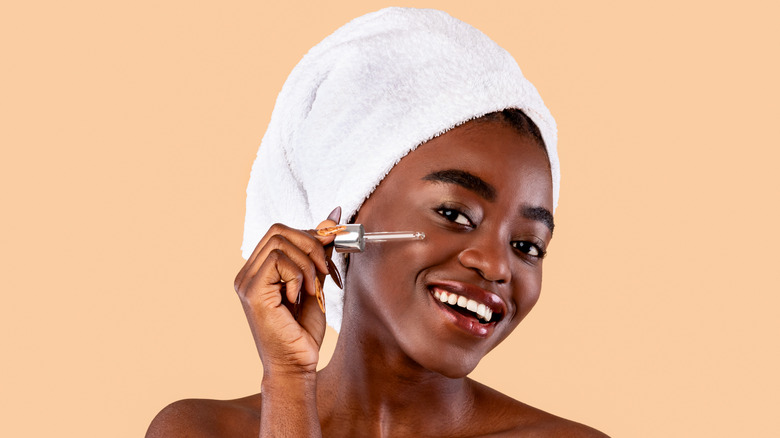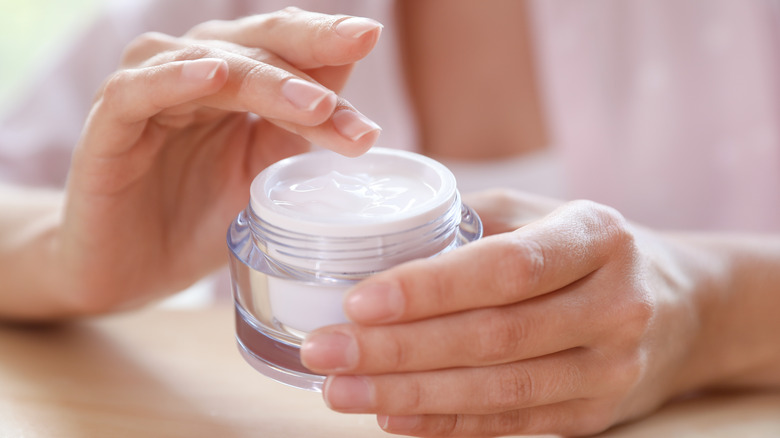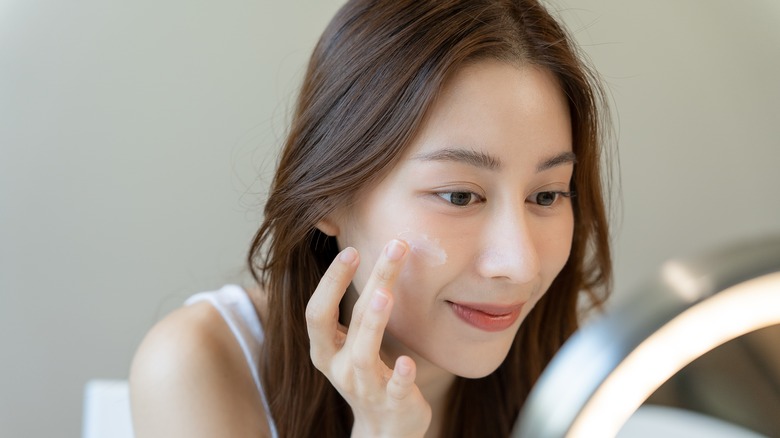How Much Retinol Should You Use At One Time?
We may receive a commission on purchases made from links.
If you've spent some time researching new skincare products, then you know the importance of retinol in your routine. Retinol is one of the must-have skincare ingredients you need to clear your skin and diminish fine lines and wrinkles. A form of vitamin A, retinol can be used to fight the appearance of aging and acne, according to Cleveland Clinic.
Even in its lower concentrations, retinol is a potent ingredient that can significantly help your skin. However, higher retinol concentrations are available through prescriptions and recommended in the most stubborn cases of acne. While retinol has become more popular throughout the years, many still aren't aware of how powerful this skincare ingredient is.
Because retinol has become more prominent in skincare products, many people don't know the right way to apply it for optimal results. It is a potent ingredient that can be harsh on your skin if not used correctly, so always ensure you're using the right amount and applying it according to your skin type. Overapplying retinol or using it in unnecessarily high concentrations can dry out and irritate your skin, sometimes exacerbating skin issues rather than resolving them. Retinol can do wonders for your skin, but only if you use it appropriately.
What is the right amount of retinol?
If you want to keep your skin safe while using retinol, only use a small amount of retinol at a time. Dermstore recommends using a pea-sized amount of your retinol during each application. When applying, start the application on your chin, then move the product upwards and outwards to reach all areas of your face. This amount is more than enough to still give you the benefits of retinol without causing irritation or redness on your skin.
As Julia Carroll, a dermatologist at Compass Dermatology, recommends via Chatelaine, "My first tip is to try the 'low and slow' approach. Start with a very small, pea-sized amount on one night, and then wait a few days to evaluate your tolerance." Once you know how retinol affects your skin, you can continue using the product.
If your retinol product is starting to give you slight redness or flaking, try mixing in a small amount of moisturizer to dilute the ingredient. This mixture should help soothe and avoid any further skin irritation. No matter your skin type, always start your retinol journey with a low concentration until you know how the ingredient will affect your skin.
How to correctly use retinol
Before you apply your retinol, you want to ensure your skin is prepped and ready for the ingredient. Skin Pharm recommends putting on your eye cream and serums before your retinol product. Because retinol can be harsh on sensitive areas, you want to create a barrier between the retinol and your eye area. A hydrating serum will also make your retinol more smooth and more effective. Also, always ensure that your skin is dry before you apply retinol to your face, as wet skin will increase the chance of retinol irritating your skin since your pores will be more open.
Another factor to keep in mind when using retinol is sunlight. Not only is the sun damaging your skin, but it can affect the quality of retinol. Comfort Zone explains that retinol can make your skin more susceptible to damage from UV rays. Since your skin is more sensitive, you'll need to wear sunscreen when using retinol. Even if you only use retinol at night, you'll want to use enough sunscreen the next day to avoid sun damage. Sunlight can also hurt the efficiency of retinol products when in packaging, so keep retinol products stored somewhere dark and away from sunlight or heat.


